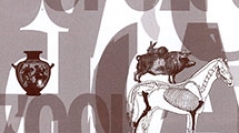

 Anthropozoologica
48 (2) - Pages 207-230
Anthropozoologica
48 (2) - Pages 207-230The Große Ofnet head burials have been interpreted as evidence of interpersonal violence within the last Mesolithic societies of Western Europe. This study aims to characterize mobility and territoriality of the last hunter -gatherers in order to understand their social organization. We submit the personal ornaments associated with the head burial to taphonomic, archaeozoological, technological, morphometric, and functional analyses in the aim to document the variability in raw material procurement, bead manufacture, length of use, and mortuary practices. Our results indicate complex acquisition patterns of the ornaments, including multidirectional exchange networks. Homogeneity in the bead manufacture suggests contacts between contemporaneous groups that shared the same technical traditions. Distributions of ornaments associated with each skull and use-wear patterns indicate an intergenerational transmission of the beads. We conclude that the last Swabian Mesolithic groups maintained active networks by perpetuating exchanges across large areas. Previous works have interpreted hostile intergroup relationship as evidence of a decrease in their mobility. Our results highlight that, in the case of Ofnet, such a reduction in mobility can be largely counterbalanced by the perpetuation of large scale exchange networks.
Symbolism, technology, tribology, morphometry, red deer canine, shell, skull